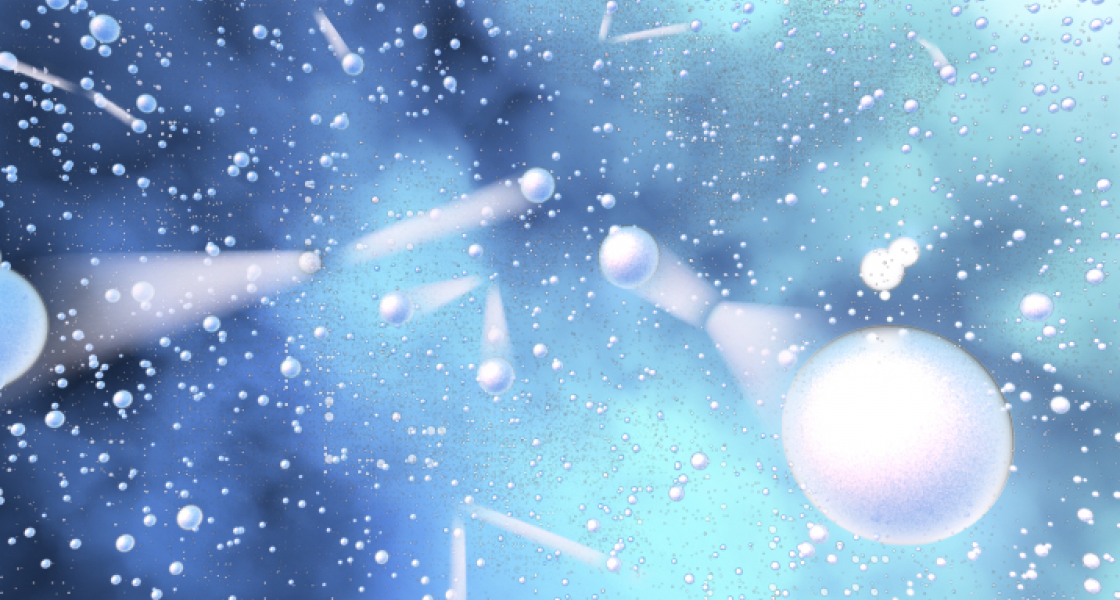The Jin and Cornell groups have discovered irrefutable evidence for the contact. The contact appears in ultracold gases under conditions when the atoms are close “contact” in a Bose-Einstein condensate, or BEC. Like pressure, volume, and temperature, the contact is an important property of ultracold ensembles of atoms. The contact is particularly important when the atoms interact with each other, since the contact tells you how likely it is that an atom in the ensemble is having a close encounter with another atom.
In 2005, theorist Shina Tan (now of Georgia Tech) introduced the contact in describing an ensemble of atoms that are fermions. Two years after Tan’s work was published (in 2008), the Jin group experimentally confirmed Tan’s predictions — for fermions. The Jin group measured the contact in an ultracold gas of potassium atoms (40K) in 2010. This work was done by former graduate students Jayson Stewart and John Gaebler, graduate student Tara Drake, and Fellow Debbie Jin.
Then in 2012, former graduate students Robert Wild and Juan Pino, graduate student Phil Makotyn, and Fellows Jin and Eric Cornell found the contact in an ultracold gas of rubidium atoms (85Rb), which are bosons. Bosons are different from fermions like 40K in that bosons can occupy the same quantum state and form a BEC. The discovery of the contact in a gas of bosons really livens things up.
Tan hadn’t predicted the contact in a system of bosons. So Jin and Cornell didn’t know for sure whether it would exist in a gas of 85Rb atoms until they found it. The JILA groups found the contact by sticking a radio-frequency (rf) microphone inside an ultracold quantum gas and “listening” for the contact. They probed the BEC with an rf pulse that selectively targeted any pairs of atoms in the gas that happened to be very close to each other; the pulse knocked anywhere from 1000–2000 atoms out of the ultracold gas. The contact signal turned out to be proportional to the number of atoms knocked out of the system.
In the process of finding the contact, the researchers developed a fast, rf-based contact spectroscopy for probing strongly interacting quantum gases. Atoms rapidly disappear from strongly interacting BECs, and most other techniques are not fast enough to allow researchers to listen or look inside the BEC before it disappears. Consequently, contact spectroscopy promises to be an extremely useful new tool for the exploration of ultracold quantum gases and liquids.
The Cornell and Jin team is currently using contact spectroscopy to investigate BECs with even stronger interactions. With this new tool, they hope to look at the evolution of a BEC from a quantum gas into a quantum liquid.



 The Physics Frontiers Centers (PFC) program supports university-based centers and institutes where the collective efforts of a larger group of individuals can enable transformational advances in the most promising research areas. The program is designed to foster major breakthroughs at the intellectual frontiers of physics by providing needed resources such as combinations of talents, skills, disciplines, and/or specialized infrastructure, not usually available to individual investigators or small groups, in an environment in which the collective efforts of the larger group can be shown to be seminal to promoting significant progress in the science and the education of students. PFCs also include creative, substantive activities aimed at enhancing education, broadening participation of traditionally underrepresented groups, and outreach to the scientific community and general public.
The Physics Frontiers Centers (PFC) program supports university-based centers and institutes where the collective efforts of a larger group of individuals can enable transformational advances in the most promising research areas. The program is designed to foster major breakthroughs at the intellectual frontiers of physics by providing needed resources such as combinations of talents, skills, disciplines, and/or specialized infrastructure, not usually available to individual investigators or small groups, in an environment in which the collective efforts of the larger group can be shown to be seminal to promoting significant progress in the science and the education of students. PFCs also include creative, substantive activities aimed at enhancing education, broadening participation of traditionally underrepresented groups, and outreach to the scientific community and general public.